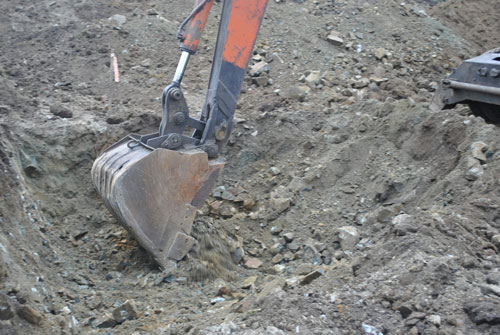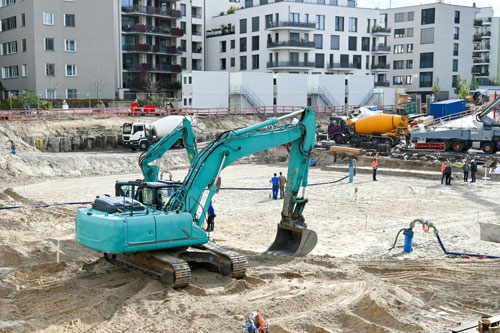When you’re working in challenging ground conditions, not just any bucket will do. Whether you’re shifting tough clay, breaking through rock or loading out demolition waste, your excavator bucket needs to be up to the task. With so many types of excavator buckets on the market, knowing which ones actually hold up on tough Australian sites — and which ones won’t — can save you a lot of time and money.
Here’s what makes a bucket truly reliable when it comes to heavy-duty excavation projects.
Why Standard Buckets Don’t Cut It
General-purpose buckets are fine for lighter material-handling tasks like digging in sand or topsoil. But once you throw them into abrasive environments or dense ground, their limitations become obvious. We’re talking cracked sidewalls, worn-through cutting edges and a loss of digging efficiency. That’s the danger of using the wrong bucket: not only will it struggle with the job, but it could also cause unnecessary wear on your machine.
Standard buckets also fall short when the task requires precise digging, digging narrow trenches, or retaining larger debris. For these kinds of jobs, you need a more purpose-built option.
What Makes a Bucket Truly Heavy-Duty?

Heavy-duty excavator buckets aren’t just thicker versions of standard buckets — they’re designed from the ground up to handle impact, abrasion and long hours of use. A proper heavy-duty bucket uses high-performance steels like BIS450 or Hardox, known for their strength, toughness and ability to absorb punishment without bending or cracking. This makes them ideal for bulk material handling and jobs that involve handling tough materials day in, day out.
Reinforcement features like internal gussets, full-length wear strips, and robust pickup points give these buckets the edge when the job gets demanding. Geometry also plays a part. A well-shaped rock bucket, for example, allows for deeper penetration and better breakout force, which means smoother digging and less wear on the machine.
Fit and Compatibility Matter More Than You Think
No matter how tough the bucket is, it won’t perform properly if it’s not matched to your machine. Getting the right excavator bucket means paying close attention to pickup dimensions — pin size, spacing and length. A poor fit can cause rattle, misalignment and even structural stress, especially when you’re working with heavier materials or in stop-start cycles. It’s not just about performance; it’s about long-term reliability.
Teeth That Do the Hard Yards

In heavy-duty scenarios, the bucket teeth are the first to feel the pressure. Poor-quality or mismatched teeth can limit how well your bucket bites into the ground and increase wear on the cutting edge. That’s why it’s worth choosing a bucket that comes with quality adaptors and the right style of tooth for the material you’re working in. Rock teeth, twin tiger teeth and flare teeth all serve different purposes, and the right choice can mean smoother digging, less downtime and fewer replacements.
Why Material Quality Matters
If there’s one thing that separates a bucket built for the long haul from one that’ll fold under pressure, it’s the steel. Heavy-duty excavator buckets face daily abuse, from sharp-edged rock and reinforced concrete to dense clay and compacted fill, and they need the materials to match.
That’s where premium steels like Hardox and BIS 450 come into their own. Both are quenched and tempered wear plate steels, explicitly engineered for high-impact, high-abrasion environments. Hardox, made by SSAB, has earned a global reputation for striking the perfect balance between hardness and toughness. It’s hard enough to resist gouging, edge wear and abrasion, but still tough enough to flex slightly under load without cracking. BIS 450, an Australian-made equivalent, offers similar wear resistance and yield strength. It’s a favourite among local operators who need gear that can handle the unique challenges of Aussie conditions without breaking down halfway through the job.
Quality buckets built from these materials typically outlast standard mild steel buckets many times over. You’ll see it in straighter sidewalls, reduced lip wear, and fewer mid-job weld repairs. And when the buckets are backed with smart reinforcement like internal gussets, heavy-duty pickups and full-length wear strips, the reliability becomes even more obvious.
In short, you’re not just paying for steel. You’re buying uptime, consistency, and the confidence that your bucket won’t give out when you’re knee-deep in hard-packed ground with deadlines looming.
Know Your Bucket Types
There are many excavator bucket types, each suited to different tasks. For example, trenching buckets are narrow and designed for creating deep, clean trenches, perfect for digging narrow paths for utilities or cables. Skeleton buckets are great for retaining larger debris while letting finer materials fall through, making them ideal for site clean-up, sorting rubble after demolition, or for sorting loose materials used in landscaping.
When you’re dealing with awkward, oversized or uneven loads, a hydraulic grab bucket gives you added grip and control. They’re commonly used for handling things like broken concrete, logs, scrap metal or demolition waste, anywhere you need to hold and position awkward materials securely. These different excavator bucket types all serve specific roles on site. The key is choosing the right excavator bucket for the task instead of stretching a general-purpose one beyond its limits.
The Bottom Line on Bucket Reliability
A heavy-duty excavator bucket isn’t just about brute strength, it’s about smart design, material selection, and proper fitment. Choosing the right bucket for your machine and application can improve productivity, reduce the risk of failure, and help you get through tough projects without delays.
If your work takes you into challenging ground conditions, investing in a reliable bucket is one of the smartest decisions you can make.
Trust Hogan Engineering for Australia’s Best Excavator Buckets
At Hogan Engineering, we’ve been helping businesses and operators of all shapes and sizes get the most out of their machines for decades. With an extensive range of excavator attachments, including excavator buckets, excavator rippers, and excavator grabs, as well as the ability to customise attachments to your specific needs, we make it easy to find the perfect fit for your projects. Contact us today to speak with a member of our team and find out how our excavator attachments can help you tackle heavy duty tasks!


 1300 446 426
1300 446 426